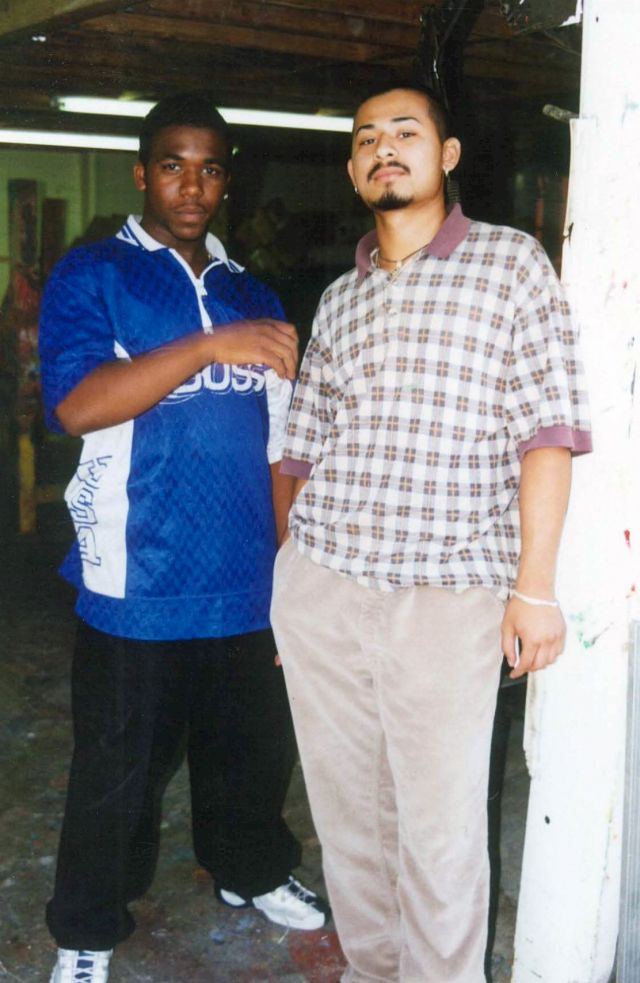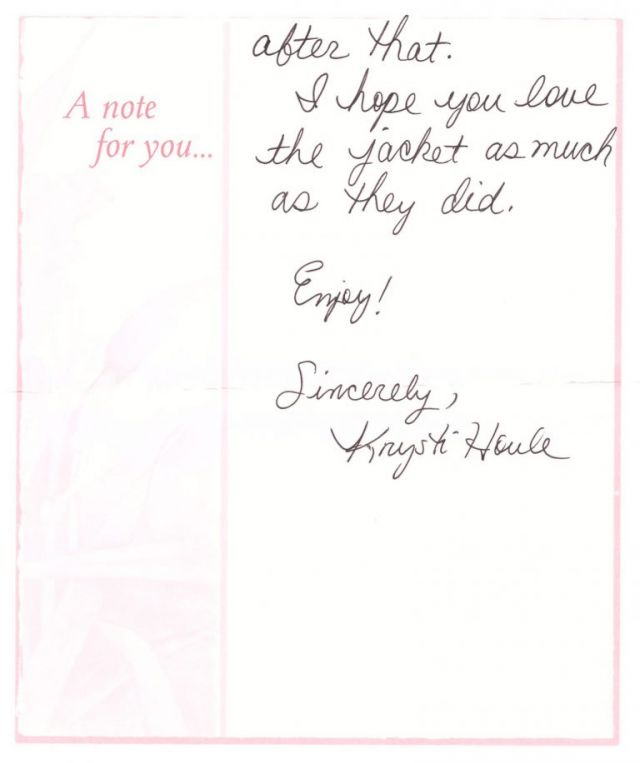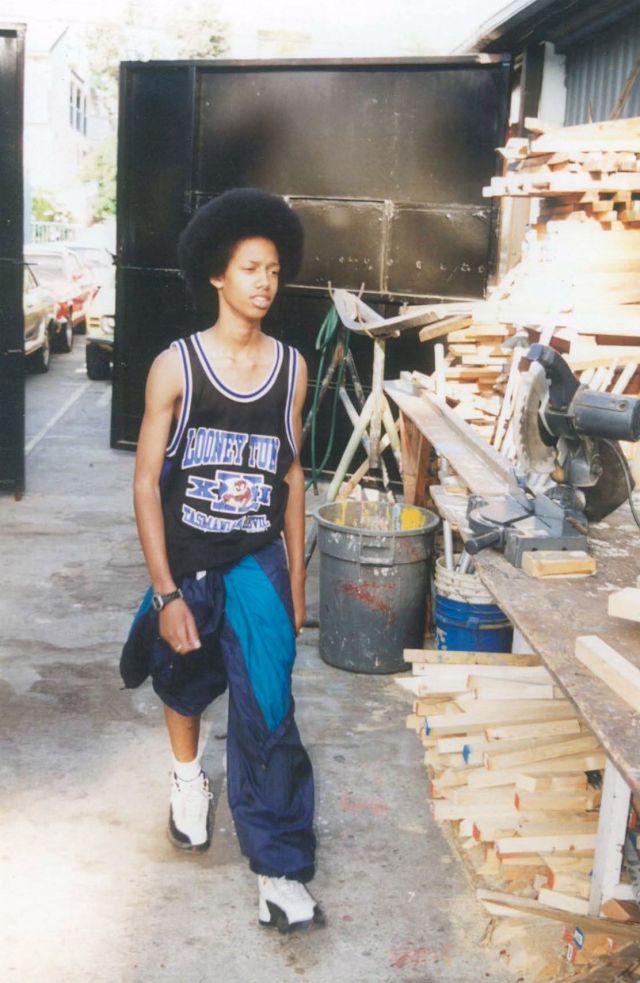Independent Collectors
Martin Steppacher on Steve Kaufman
Although never meeting the artist, Martin Steppacher is almost completely dedicated to collecting to the works of Steve Kaufman, assistant to Andy Warhol.

He (Steve Kaufman) was legendary. He is remembered as a trailblazing American pop artist, former assistant to Andy Warhol, and most notably, a generous humanitarian.
In the quiet village of Altnau, Switzerland with Lake Constance as a tranquil backdrop, the conversation with Swiss collector Martin Steppacher began with no room for the small talk of collecting. Martin went straight to the crunch and explained the social engagements that Steve Kaufman fostered with his art. It was clear just how passionate Martin is about this artist and man, who dominates his art collection. With a professional background in medicine, it evolved over the course of our conversation exactly why it is, that he is so dedicated to this one artist.
Steve Alan Kaufman was a kid of the Bronx and Martin Steppacher was proud to claim that they were born in the same year, 1960. At 8 years old Kaufman was already painting and those works can be found in the Museum of Jewish Heritage in Brooklyn. At 15, he was part of a group graffiti show at the Whitney Museum. Then at 18, he enrolled to study art and met Warhol and worked as his assistant in The Factory. Donned SAK by Warhol, this became his artist name. Later he had a group show with Keith Haring and acutely became politically active in the campaign for AIDS awareness. He made graffiti murals all over NYC, to honour Malcolm X, profile NYC homeless and promote racial harmony.
Moving to his 30’s, and in L.A. at that time in the early 1990’s, SAK had set up his own art studio and had a solid reputation for himself in the art world. There, he employed ex-gang kids from gaol to assist in his studio, which continued over the following two decades. He called his foundation Give Kids A Break and planned to open up locations all over America. On top of that, he supported an abundance of other charities and pursued social work wherever he could. In 2010, after two prior strokes, he passed away from a heart attack as he was preparing for an exhibition.
Today the spirit and legacy of SAK continues, through the passionate work of people like Martin Steppacher, as well as Diana Vachier who is based in the States. Steve Kaufman and Diana worked together from 1999 until his passing. To reach a wider audience with SAK’s art, Diana sold his limited editions on Ebay from 2001 until 2010. Together in 2005, they also opened a satellite gallery in New York, American Pop Art Inc., which Diana continues to operate to this day. In Steve’s Will, he named her as the sole heir to his licensing rights. She has now licensed his images for products, organises exhibitions in the States, works with galleries and places his art in museums.
Following is the intimate conversation that developed between IC curator Georgie Pope, and devoted SAK collector Martin Steppacher:

MARTIN STEPPACHER
I just want to show you this work of the colourful candy, because it shows how Steve was always wanting to use motifs that were appealing and accessible, especially for kids. He made works with a mix of imagery from his own imagination, iconic symbols and inspiration from other artists, the movies and music.
IC
You immediately mention children in relation to Steve Kaufmann and that he was concerned with accessibility, please elaborate.
MARTIN STEPPACHER
He was really all about the kids. It stemmed from Give Kids A Break, that was his foundation. So he was even doing things like making artworks of candy, just for the kids, to really connect to them and to connect them to the art. They worked for him in his studio, straight out of gaol, they were employed, and his goal was to re-integrate and associate them back into society.


IC
Do you know how many kids he worked with?
MARTIN STEPPACHER
Yes, it was hundreds. There is a video. He opened the door of his own studio for the kids and his plan was to establish these studios in different cities and states. The first one was in L.A., then the plan was for Chicago, New York and other towns. But he passed away before that happened.
He was very often in Colorado in the winter time, in his favourite region and this is also why he has some small pictures from Colorado. I think he had an art studio or gallery in Vail, Colorado. There is a picture with friends I guess a year before he died, and he was already in a wheel chair, after his first stroke.
So I think it’s very important – Give Kids A Break.
The works in the series are always the same size, 30 x 30 or 25 x 25 cm. And they depict well know people and symbols, like Martin Luthar King, the American flag, the peace sign. There were specific motives (about 15/16) produced for Give Kids A Break.




Steve always said, "I'm truly blessed to be doing what I've wanted-CREATE. If I die tomorrow, I was definitely blessed. That's what it's all about, just giving back". That is exactly what he did and that is very similar to my point of view on life, my aim and in connection to what I do with collecting.
MARTIN STEPPACHER


IC
What was the role of the kids?
MARTIN STEPPACHER
They were taught how to frame the works and they did every step involved in that. They learned skills, like cutting wood, building frames, stretching the canvas.
Then the works were sold and the kids were also involved. All the income generated from the sales of those works went back into the organisation and also the kids made money as they were paid.
IC
Going right back to the beginning, how was it that you first came into contact with the work of SAK?
MARTIN STEPPACHER
It was actually on eBay. I bought some of his bank note works, of which I now have a variety of approximately 30 – 35. From the bank notes, I started to make more background information about him and I found that we had the same age. I further discovered what he was doing, his career, and that he grew up in the Bronx, in these hard surroundings.

IC
So you felt that you had a personal connection to this man?
MARTIN STEPPACHER
Yes!
And then it was 3 or 4 years later in 2007, that I started a small gallery in the region of my hometown. It was my big dream to have Steve once in my gallery. I didn’t want to sell works. It was more or less a coming back to have more time for myself, to have a place that I could go to realise and to think, contemplate.
The space was a small room, about 60 or 70 square meters, where I hung up all the works that I had there. I wanted to make this artist more known to people, and not necessarily focused on the art, but more on his character and who Steve Kaufman is. As we talked about the selflessness, the social context, I was very engaged by Give Kids A Break.
IC
I assume that you saw Basel and it’s art world as a great opportunity to expose the work of SAK and Give Kids A Break within Europe, what happened to that gallery space?
MARTIN STEPPACHER
After 2 or 3 years I closed the gallery because it was too expensive for me. Even to have that one room, without commercial activities, it wasn’t sustainable. I opened it on Friday and Saturday, and I did not want to sell. My wife always commented, “you don’t want to sell pictures” – and that’s right. For me it was that I wanted to pursue a certain piece, and in the gallery, I could show it and share it.
Steve always said, “I’m truly blessed to be doing what I’ve wanted-CREATE. If I die tomorrow, I was definitely blessed. That’s what it’s all about, just giving back”. That is exactly what he did and that is very similar to my point of view on life, my aim, and in connection to what I do with collecting.
IC
Do you know how many pieces are in your SAK collection?
MARTIN STEPPACHER
There are roughly 85 uniques or originals and about the same, about 80 limited editions. And those are not more than 150 pieces of the same topic that were embellished. His uniques are not more than 5 pieces – these are not an invention of Steve, but many artists have made uniques (Picasso for example) and these are 5, more or less similar work, to also give to other artists or friends. This is very well known and several artists gave away their own works to other artists, and this was an exchange, a way to ask –what do you think about my art?
IC
You have paintings, editions, uniques, and I also see a variety of objects around your home. Please tell me about these.
MARTIN STEPPACHER
To start with my favourite, it’s the bull, Mr Bull.
The other objects include – soup cans, even as a coffee table; some paint brushes; a watch with the face designed by Steve; and coats. I have 3 jackets – two white ones with Marilyn, and the other is painted leather jacket, by now very dried and with a very big story. I have a photo to go with it.
I was able to acquire the jacket into my collection after buying it from a woman who was urged to make some money. Steve had originally given the jacket to that woman’s son, who was handy caped and lived in a wheel chair. The event was a meeting that Steve attended, following the same vein of Give Kids A Break, he joined various community meetings concerning disadvantaged groups. At that one particular meeting, he saw that boy and pulled off his own jacket (a big jacket at that, not one for a child) and gave it to the boy.
It was about 7 or 8 years later that the mother needed to sell that jacket to make some money, and I had the beautiful possibility to buy it.





IC
This is the jacket that I have seen, prior to this conversation, in your city apartment?
MARTIN STEPPACHER
Yes. It represents so so many things.
This is where Diana and I have a unified dream. I want to build my collection of SAK works and to show people what this business is amongst the fast pace of life, and that with art, there are possibilities that don’t make sense to be commercial, but instead create enjoyment and help for others.
My goal with the collection is to locate and acquire any works that are in the hands of those who’s motives are otherwise.
IC
By now you are the biggest collector of Steve Kaufman and your mission with an ethical pursuit is to locate any artworks in improper circulation. You would like to integrate these into your collection so that you can expose them to a wide audience following Steve’s values.
(Martin sorts through some documents and finds a letter, which he reads out:)
MARTIN STEPPACHER
“To the new owner of this beautiful jacket…
… I just wanted to share this picture with you of Steve Kaufman wearing this jacket. This was taken at my event called The Love Ride. A motor cycle fundraiser for….”
Sorry, very emotional.
It was also very complex for her to sell this jacket because it was a personal gift from Steve. But we also don’t know the exact financial situation of the boy’s mum. She sold the jacket and most likely Steve could accept the situation of her son.






IC
If there is anyone that should be the owner of this jacket, it is you Martin. And I would say you are more than the owner of these artworks, you are the care taker, and you want to continue to spread the great work that SAK did.
MARTIN STEPPACHER
The mother gave the jacket to an art brokerage to sell. I will never sell this jacket. Probably I even have to create a foundation for Steve’s own foundation, to preserve all this stuff… I want to show all the stuff – the canvas works, the coats, the bulls, the table, and share Steve’s spirit of life, which I feel so aligned to.
IC
In this similar life spirit, do you also mean because of your professional career in medicine, which ultimately saves lives?
MARTIN STEPPACHER
Yes. I started as a male nurse and then went on to develop a system for prosthetic veins.
IC
Both your professional and passionate pursuits (with collecting), are in helping people. What was happening in your life when you first became interested in art? What created this spark?
MARTIN STEPPACHER
I think it was the possibility to have earned enough money to have the possibility to have a base, and enough money to buy this art.
Initially, my absolute favourite artist (sorry for that) was Frances Bacon, and Bacon was already very expensive at the end of the last century. Bacon was my first interest, because of his fullness, craziness, darkness & absurdity. This is in absolute contrary to Steve Kaufman. Bacon once said in an interview: “don’t imagine anything in my pictures, this is my impression of today and my homosexuality, which I do very intensively and this is my expression, but don’t imagine a message in my pictures”.
This was a little bit strange to me because that is right – you can’t describe the picture of another, when you aren’t the artist. The artist is the only person who can truly describe what his/her message is. Following that logic, it can be quite strange if you have a museum expert who is urged to describe the message of an artwork. This was at first very strange to me, but I was fascinated by Bacon because he is so strange.
On the other hand SAK is totally different because he wanted to have a message and he wanted to give more happiness to people.
IC
Bacon was your entry point to art and Steve became your solidifying moment.
MARTIN STEPPACHER
Yes. eBay was actually great for access to Steve, and I further came to know a bit about the person and that he was of the same generation as me. With Bacon I loved the strangeness, but I would never have contact with this person, even if he was not dead. I am also not interested in his life, his imagery is very strange and I am fascinated by that, but its result is more fear on the wall, than happiness. With Kaufman there is a very emotional relationship.
IC
That’s a very specific mode of collecting you have shaped. There is a cross over of aesthetics and emotions, but also an interesting dedication to almost only follow one artist, which has culminated in now wanting to tie up any loose ends of SAK artworks in the market.
MARTIN STEPPACHER
Yes and I think this is very important together with Diana, as the owner of American Pop Art Inc. and heritage/licence holder of SAK. We are dedicated to get all the works from people who have them for reasons other than which they should. To be an artist dedicated to charity work, a humanitarian, means to me, that his legacy has to be treated in a special way.


